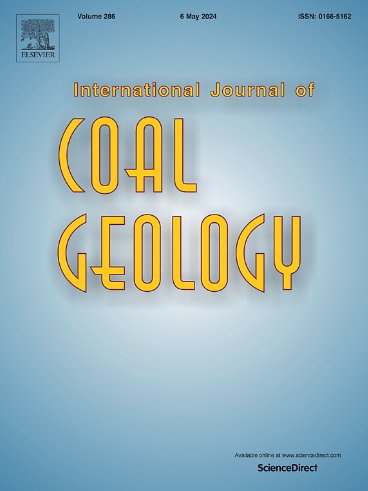Advancing shale geochemistry: Predicting major oxides and trace elements using machine learning in well-log analysis of the Horn River Group shales
IF 5.7
2区 工程技术
Q2 ENERGY & FUELS
引用次数: 0
Abstract
This study evaluates machine learning algorithms for predicting geochemical compositions in the Middle to Upper Devonian Horn River Group shales. The minor textural variations within shale successions necessitate a detailed understanding of their geochemical composition for accurate interpretation of depositional environments and stratigraphic relationships. Geochemical analysis is essential for unconventional reservoir shales but is traditionally labor-intensive. Machine learning offers a cost-effective alternative, streamlining geochemical interpretation and stratigraphic correlation. Five models, Random Forest Regressor, Gradient Boosting Regressor, XGBoost, Support Vector Regressor, and Artificial Neural Networks (ANN), were assessed using well-log data to predict major oxides and trace elements. Training and validation used data from two wells, with model performance tested on an unseen well to evaluate generalizability. Tree-based models, particularly Random Forest Regressor, demonstrated high accuracy for major oxides such as K₂O and CaO, while Gradient Boosting Regressor excelled for Al₂O₃ and TiO₂. However, SiO₂ and Na₂O were less predictable due to their complex origins and low concentrations. For trace elements, Random Forest Regressor effectively predicted Th, Zr, Co, and total rare earth elements (∑REE). Redox-sensitive elements such as Mo, Cu, U, and Ni had lower accuracy due to their weaker correlation with well-log data; however, Random Forest Regressor still achieved the best performance among the models for these elements. Blind tests confirmed the generalizability of the models, with tree-based models maintaining strong predictive performance for several major oxides, trace elements, and REEs, while ANN and Support Vector Regressor exhibited robustness in Al₂O₃, K₂O, and TiO₂ predictions. This study highlights tree-based models as reliable tools for predicting geochemical compositions, supporting chemostratigraphy and reservoir characterization. Integrating machine learning with well-log data offers a promising solution for efficient geochemical analysis and subsurface characterization in Devonian shale reservoirs.
推进页岩地球化学:在Horn River组页岩测井分析中使用机器学习预测主要氧化物和微量元素
本研究评估了机器学习算法在预测泥盆纪中上泥盆纪角河组页岩地球化学成分中的应用。为了准确解释沉积环境和地层关系,页岩层序中的微小结构变化需要详细了解其地球化学组成。地球化学分析对非常规储层页岩至关重要,但传统上是一项劳动密集型的工作。机器学习提供了一种具有成本效益的替代方案,简化了地球化学解释和地层对比。利用测井数据对随机森林回归、梯度增强回归、XGBoost、支持向量回归和人工神经网络(ANN) 5种模型进行了评估,以预测主要的氧化物和微量元素。训练和验证使用了来自两口井的数据,并在未见过的井中测试了模型的性能,以评估其泛化性。基于树的模型,特别是随机森林回归器,对主要的氧化物如K₂O和CaO表现出很高的准确性,而梯度增强回归器对Al₂O₃和TiO₂表现出优异的准确性。然而,由于SiO₂和Na₂O的起源复杂且浓度低,因此难以预测。对于微量元素,随机森林回归模型能有效预测Th、Zr、Co和总稀土元素(∑REE)。Mo、Cu、U、Ni等氧化还原敏感元素与测井资料相关性较弱,精度较低;然而,随机森林回归仍然在这些元素的模型中取得了最好的表现。盲测试证实了模型的可泛化性,基于树的模型对几种主要的氧化物、微量元素和稀土元素保持了很强的预测性能,而ANN和支持向量回归器在Al₂O₃、K₂O和TiO₂预测中表现出了鲁棒性。该研究强调基于树的模型是预测地球化学成分、支持化学地层学和储层表征的可靠工具。将机器学习与测井数据相结合,为泥盆纪页岩储层的高效地球化学分析和地下表征提供了一种很有前途的解决方案。
本文章由计算机程序翻译,如有差异,请以英文原文为准。
求助全文
约1分钟内获得全文
求助全文
来源期刊

International Journal of Coal Geology
工程技术-地球科学综合
CiteScore
11.00
自引率
14.30%
发文量
145
审稿时长
38 days
期刊介绍:
The International Journal of Coal Geology deals with fundamental and applied aspects of the geology and petrology of coal, oil/gas source rocks and shale gas resources. The journal aims to advance the exploration, exploitation and utilization of these resources, and to stimulate environmental awareness as well as advancement of engineering for effective resource management.
 求助内容:
求助内容: 应助结果提醒方式:
应助结果提醒方式:


